Words Amicia de Moubray Photographs Faversham Society, Amicia de Moubray
Sixty years ago, the Faversham Society was founded by a band of passionate young people – largely in their 20s, determined to protect the town from the ravages of the very worst of 1960s town planning and the needless demolition of old buildings. ’By the early 1960s many long-term residents were becoming concerned about the possible loss of historic buildings and together with some newcomers joined forces to start the society’ says Dorothy Percival, widow of the esteemed Arthur Percival, one of the original founders. The Percivals themselves moved to Faversham in the 1960s.
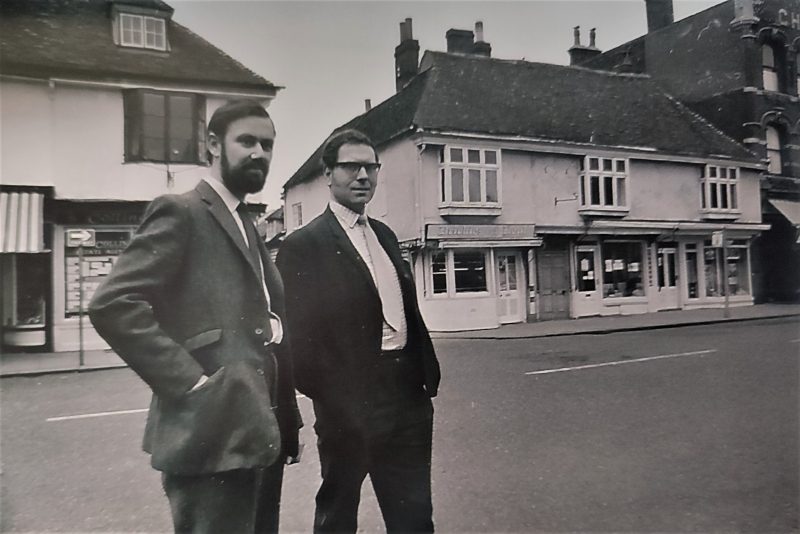
Peter Hutley-Bull and Arthur Percival in front of 10-11a Court Street, saved from destruction after the society’s successful opposition to the county council’s ring road
All who love Faversham today owe an inestimable debt of gratitude to those determined young folk; and to the hundreds of volunteers who have kept the society active for the past 60 years.

Abbey Street in the 1960s
It was the narrowly averted demolition of Abbey Street to make way for an inner ring road that provoked the birth of the Faversham Society. Today, it is inconceivable to imagine the town without Abbey Street – surely one of the most architecturally delightful roads in southern England. It is equally odd to think that it was then becoming very derelict’ says Dorothy.
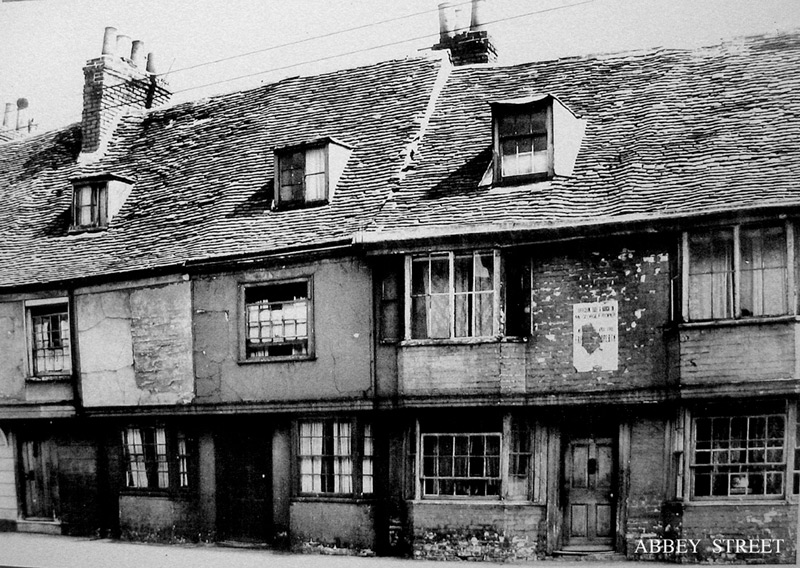
The parlous state of Abbey Street in the 1960s
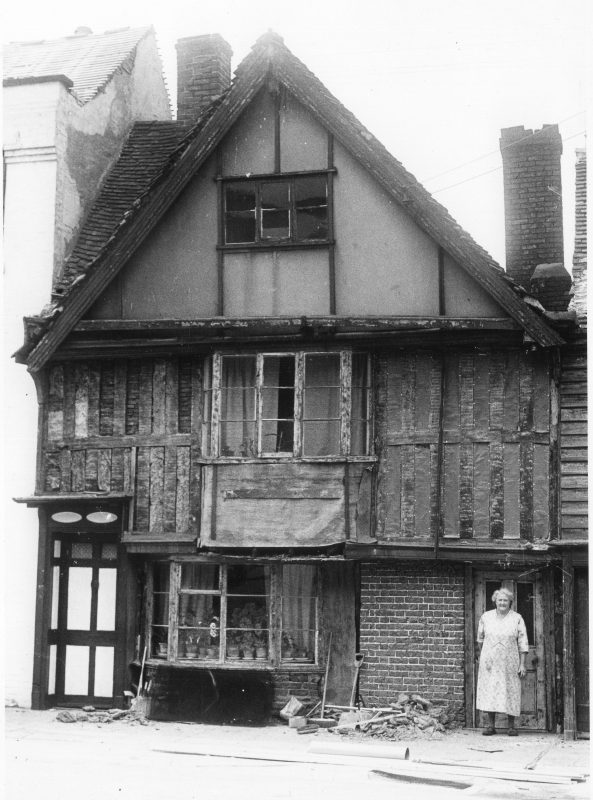
An example of the woeful state of repair of many buildings in Abbey Street in the 1960s
One hundred and fifty people attended the first meeting on 17 October 1962, chaired by the Earl of Euston, a stalwart of the Georgian Group, in the Guildhall. It was recognised from the start that the society should be not just about preservation, but about the present and future of the town. It quickly took off and various sub-committees including the planning committee were established. The strapline on the society’s website states ‘we seek to Cherish the Past, Adorn the Present, Create for the Future.’
Architectural aficionados have Arthur Percival to thank for starting the Faversham Society’s imaginative Open House fifty-three years ago. The Society still organises this. It was used as a template for the National Heritage Open Days scheme thirty-three years ago and these now take place annually throughout the country. Gardens in the town also open each year.
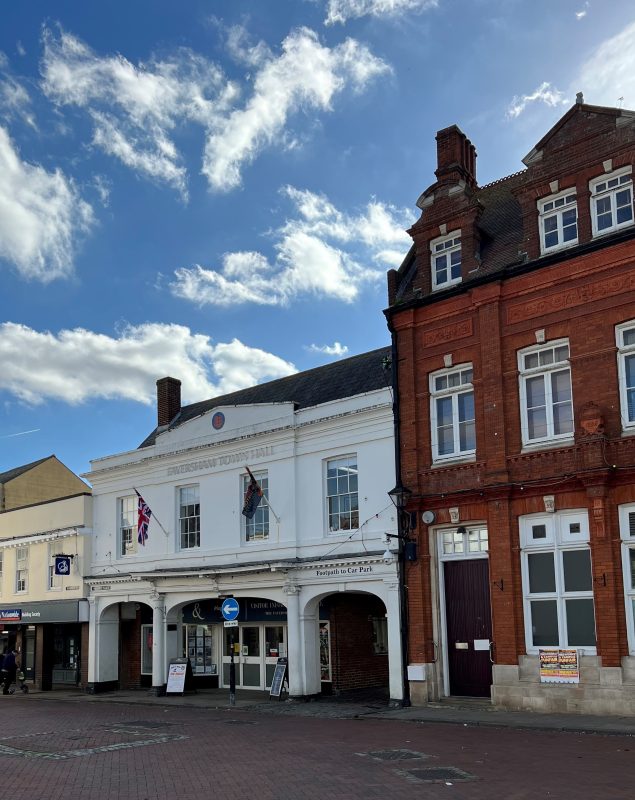
The Visitor Information Centre in the Market Place, Faversham run by the Society.
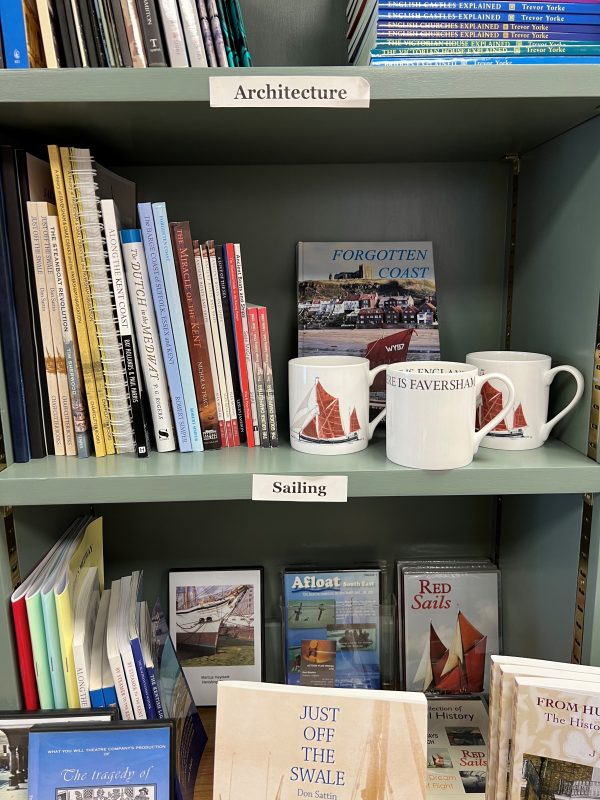
A selection of the enticing books and mugs for sale in the recently opened Visitor Information Centre on the Market Square
‘The Society has 850 members and has a strong presence in the town,’ says Harold Goodwin, chairman since 2016. Members receive a beautifully produced monthly newsletter brimming with news of local happenings as well as details of events such as lectures. ‘The recent move from Preston Street to the Market Square has been very beneficial, leading to an increased footfall,’ It is almost certainly the only local amenity society to do the variety of things that it does: running a tourist information centre, operating a small museum, running a shop, looking after the Chart Mills and the Maison Dieu, promoting Faversham Historians who meet quarterly to network and share research, and publishing scholarly local history books, more than a hundred so far on a staggering wide range of subjects from Faversham’s Reluctant Exiles (stories of people packed off to Australia for various offences between 1825-45), Gunpowder terminology, Lost Windmills of Faversham and Faversham Abbey to list just a few examples.
Originally from Manchester, Harold has lived in the town for very nearly 50 years. He says it is a ‘northern town in Kent – it has a mixed economy, is not twee, has a very strong sense of community, is friendly to newcomers who get stuck in, has beautiful architecture and amazing craft skills. If anything too much goes on!’
The Society’s latest initiative is to enlist the help of Connected Heritage, a two-year project set up by Wikimedia to improve digital skills in the heritage sector. Jane Secker, a new trustee of the Faversham Society and a senior lecturer in Education Development, has organised a series of workshops to train volunteers to improve the accuracy of all the pages relating to Faversham and the uploading of historic photographs. Wikimedia UK, the national charity for the global Wikimedia movement, was awarded funding in 2021 by the National Lottery Heritage Fund to establish digital skills for heritage. ‘Civic societies are usually associated with older people,’ says Jane, ‘and we are hoping to recruit young people to engage with this initiative.’
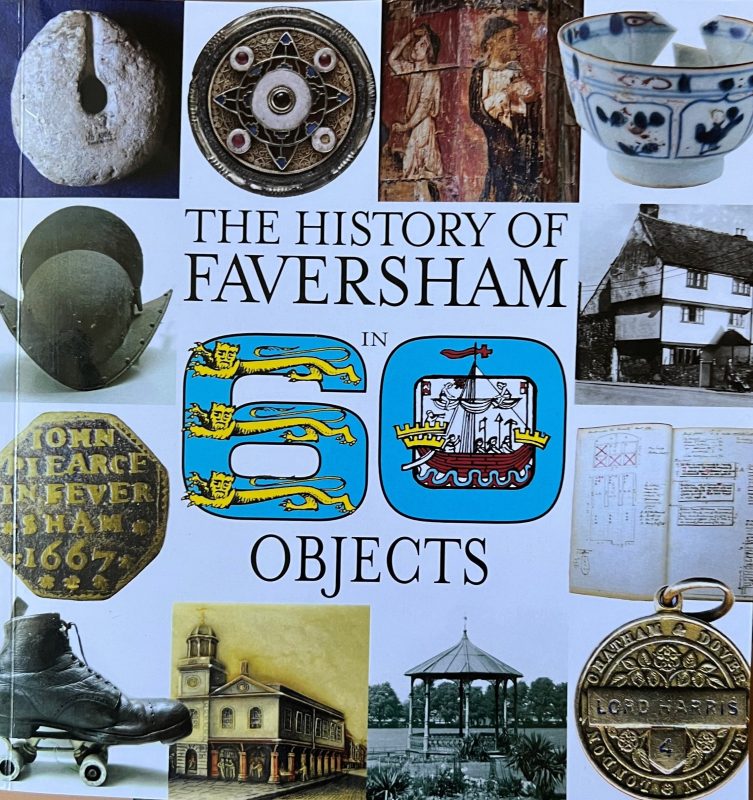
The recently published The History of Faversham in 60 Objects is available from the Market Place £9.99. It is an enthralling read
The current issues of concern for the Society are the following: traffic, the Cleve Hill Substation, the Creek Bridge and new housing.
If you want to find out more about the history of this remarkable amenity society, Our Beautiful Town, a DVD is available from the Fleur de Lis Heritage Centre, 22 Market Place, Faversham.
Text: Amicia de Moubray. Photographs: The Faversham Society, Amicia de Moubray.